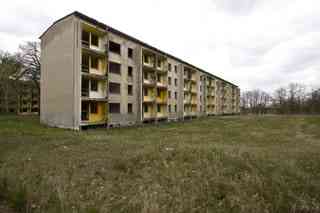Being chosen to host the Olympics is one of the greatest honors any city, let alone country, can receive. The bidding process is competitive and often political, with heads of state throwing their weight behind their country to win the prize. And their reasons for wanting to host the Olympics, an event that happens every four years, are legitimate. Some 3.6 billion people around the globe are expected to watch this year’s Summer Games in Rio de Janeiro, with much of the money for the event funneling into the city (in 2008 Beijing alone reaped about $146 million from holding the Summer Olympics). With so many eyes and so much money pouring in, organizers in the winning cities want to ensure everything goes perfectly, building new stadiums, along with dedicated venues like bobsled courses, and housing for athletes. As beautiful as these facilities may be, what happens to them after the 16-day event ends? With the festivities kicking off this week in Brazil—a country that’s spent upwards of $25 billion on infrastructure for the event— AD looks back at some former Olympic buildings that have lost their former glory.

The softball stadium at the Helliniko Olympic complex in Athens, Greece. The capital city hosted the XXVIII Olympic Games, in 2004, at an estimated cost of $10 billion.

Two of the five mascots for the 2008 Olympics are seen lying among trees behind an abandoned mall in Beijing, which spent roughly $40 billion on the 16-day event.

Derelict houses in the Olympic Village—the athlete quarters—of the 1936 Berlin Games. That summer, American sprinter Jesse Owens won four gold medals, shattering racial stereotypes.
An abandoned bobsled track near Sarajevo was originally built for the 1984 Winter Olympics.

Leave a Reply